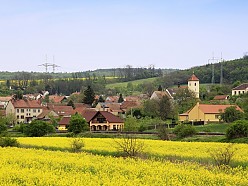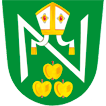About us

The first written reference of Nevojice comes from 1353, although it was founded in the eleventh or twelfth-century. Throughout its history, the village’s owners have changed frequently. After Jindřichov of Nevojice - mentioned in the first record, at the end of the fourteenth-century - the owner was Jakub Konček of Prusy and, later in the fifteenth-century, the noble men of Ojnice. In 1511 Tas of Ojnice bought Bučovic and since then the villages have shared their owners. In 1533 the daughter of Tas Anna brought the Bučovice Earldom to Václav of Boskovice as dowry. The last man of this influential Moravian clan was Jan Černohorský of Boskovice, called Šembera. His daughter, in 1597, maried Maxmilian of Liechtenstein. The Liechtenstein family owned Bučovice along with Nevojice until 1848 – and the surrounding forests until 1945.
The village was an enclosed settlement until the end of Thirty Years War. Only a mill on the Litava River was outside the settlement. However this burnt down in 1891. In the second half of seventeenth-century the settlement spread eastwards. This part of village was later known as hoofer’s cottage houses.
Keep – remains of a levelled fortress – defence of Nevojice noble men (parish garden).
Little Castle – strategic fortification with views stretching to Brno (west), most likely a man-made hillock (Little Castle).
New street was built on the right side of the Litava River after the First World War. It followed the former road from Bučovice to Koryčany, built in 1847. After the Second World War the village grew mainly in its southern and eastern parts where many new streets were built. At present sites are for sale in this area.
School - has been in the village since 1785. A curate house was built in the same year. In 1889 a new school was built and nowadays this is used as a nursery school. A new parish was added in 1911.
A train route from Brno to Vlárský průsmyk was opened in 1887, this was a monorail. Later in 1920 a train station was built. The state road I/50 from Brno to Uherské Hradiště was built in 1939.
The village crest and flag
The green base of the crest signifies nature and the silver ‘N’ stands for the first historically recorded person bearing the village name - Jindřich of Nevojice. A pontifical mitre and three apples are the most famous attributes of St. Nicholas, patron of the village church.

Nevojice



20.04.2024
Marcela





